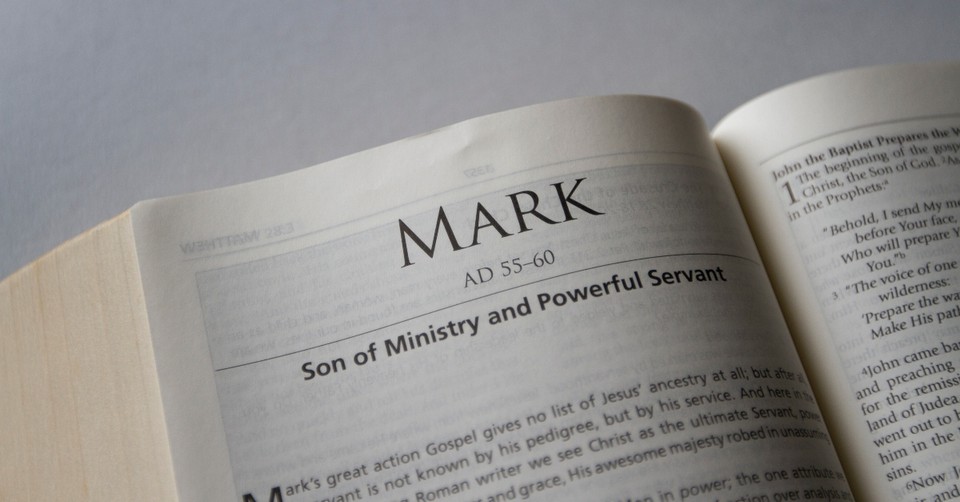3 Lessons We Can Learn from the Story of Jairus' Daughter

The story of Jarius' daughter teaches us of miraculous faith through suffering. Suffering and loss can be lonely ventures in this world. When we are healthy and have provisions, our outlook is bright and our relationships full and supportive. But when suffering, sorrow, and death come, when the cruel bite of sin in our world reminds us of our mortality, we often find ourselves alone. The narrative provided in Mark 5 demonstrates that while suffering can isolate and overwhelm us, faith in Jesus, in His reality and in His timing, provides both comfort and hope in times of trouble. In the preceding chapters, Jesus is seeking specific people with which to interact and using situations to provoke responses from the disciples. Jesus calls the twelve disciples in chapter three, having sought them out individually to follow Him (Mark 1:17; 2:14; 3:13).
Jesus teaches the crowds through parables and then provides additional instruction to the twelve, highlighting the meaning behind the parables (Mark 4:11). Jesus’ teaching and illustrations flow into life for the disciples as well as He finished parables about faith and then demonstrated their need for faith when a storm arose on the Sea of Galilee that almost sank their ship (Mark 4:37). Jesus called the twelve and was teaching them through Word and action what it means to have faith in Him as God, to trust Jesus to define truth and reality, trusting that His time, purpose, and plan are right and loving. With the resolution of the storm, Jesus with the twelve lands in Gentile territory on the other side of the Sea of Galilee for Jesus to heal a demon-possessed man, returning immediately after to the other side, back in Capernaum. Jesus’ intentionality in seeking the lost and calling them to Himself is overwhelming in this section, flowing into Jesus’ return to Capernaum and the urgent arrival of Jairus to plead for the health of his daughter.
What Is the Story of Jairus' Daughter?
Mark introduces Jairus as “one of the rulers of the synagogue” in Capernaum (Mark 5:22), most probably where Jesus attended with His disciples as He used Capernaum as a sort of base camp for His earthly ministry (Matt. 9:1; Mark 1:21; 2:1). Jairus demonstrated faith in Jesus by imploring Him to come and heal his twelve-year-old daughter, believing that Jesus could make her well again (Mark 5:23). Afraid for the life of his only daughter (Luke 8:42), Jairus’ faith is tested as Jesus delays His journey, stopping to seek out one more person. Within a crush of bodies in the crowd, an unnamed and outcast woman who had experienced incurable bleeding for 12 years reached out and touched Jesus’ outer coat, believing that “If I touch even his garments, I will be made well” (Mark 5:28). From this touch, the woman was immediately healed, and Jesus interrupted her plan for miraculous anonymity by seeking her out. While her faith made her well, it was not her faith in Jesus’ cloak but in the person of Jesus that provided the healing.
While we seek miracles, Jesus desires relationships and provides the means for connection by calling us out of the crowd to acknowledge our need for Him and His provision for us. For a woman who lived as dead for 12 years, an outcast from society through ritual uncleanness and outside the capacity for touch and relationship, Jesus provides new life and purpose, calling her “Daughter” (Mark 5:34), the only time Jesus is recorded using this affectionate title, demonstrating that healing, hope, and new life come through relationship with Him.
Jairus’ fear for the life of his daughter is realized as men arrived from his home to report that during this delay, his daughter died (Mark 5:35). In the minds of these men, death marked the end of Jesus’ ability to help, but Jesus’ plans and purposes are different from ours and Jesus reiterated His call to Jairus to continue in his belief, acknowledging Jairus’ reality with “Do not fear, only believe” (Mark 5:36). Extricating Himself from the throng, Jesus proceeded with His inner three disciples (Peter, James, and John) to Jairus’ home. Upon their arrival, Jesus challenged the reality of the crowd of mourners already gathered, stating that their pronouncement of the girl’s death was incorrect (Luke 8:52). Again, using touch and calling her in Aramaic, Jesus commanded the little girl to get up (Mark 5:41). From death to life, the 12-year-old girl got up and walked around. Both the parents and the disciples were astonished, “out of their minds with great amazement” (Bible Knowledge Commentary).
What Does the Story of Jairus' Daughter Teach Us?
The story of Jairus’ daughter cannot be separated from the context of Mark’s narrative as this section has a “sandwich” structure, with the incident of the woman with the issue of blood dividing the story of Jairus’s daughter in the middle to connect the stories together. This connection between the 12-year-old girl and the woman with a 12-year-long hemorrhage provides two examples of the same three lessons from this passage.
Lesson 1: Our Faith Resides in the Person of Christ, Not Our Plans
Both Jairus and the woman had a plan that Jesus disrupted. Jairus rightly believed that Jesus could heal his daughter to make her well, needing only to lay His hands on her, but this belief was challenged and produced fear when his daughter died. The woman’s plan was to remain unknown and unseen, retaining her position on the outside and seeking only physical relief from her perpetual bleeding. Jesus disrupted both their plans because our faith does not reside in a thing, like the laying on of hands or the touch of a garment, but in relationship with the person of Jesus Christ. Jesus challenged Jairus to stop fearing and keep believing in Him, even when it seems impossible. Jesus expanded the woman’s plan by not just healing her physically, but by seeing her and connecting in relational terms, providing wholeness to her healing and addressing her felt need and her actual need of relationship with Him as His child.
Lesson 2: Trust Jesus to Define Reality and Truth, Not the Crowd
The disciples were confounded with Jesus’ question about who touched Him, stressing what they thought seemed obvious that everyone was touching Him as the crowd pressed upon them. Mark notes that as Jesus looked around, to the probable confusion of the disciples, the woman knew and responded. The crowd viewed the woman as unhealable and unclean, beyond help (5:26), but Jesus saw her and sought her, changing her reality through relationship with Him and bringing her from death to life. She was not beyond His capacity or concern. The men who arrived from Jairus’s home believed that death meant the end of Jesus’ ability to heal Jairus’s daughter. “Your daughter is dead. Why trouble the Teacher any further?” (Mark 5:35). The professional mourners laughed at Jesus when He said “The child is not dead but sleeping” (Mark 5:39). When all hope seems lost – when life goes from bad to dead – we need to see things not like the crowd, but like Jesus. Each touch matters. Even death cannot contain or disrupt the purpose and provision of our Savior (1 Cor. 15:20-26). When the troubles around us seem insurmountable, the waves are crashing over the gunnels and we have tried everything we can try, “Do not be afraid, only believe” (Mark 5:36).
Lesson 3: Our Time and God’s Time May Be Different
Twelve years. Twelve years must have felt like forever for the woman with the issue of blood. She had tried everything and “had spent all that she had, and was no better but grew worse” (Mark 5:26). According to the Law, this woman’s condition would have made her ritually unclean and exclude her from social relationships as anything she touched or that touched her would be made unclean as well (Lev. 15:25-27). Like a leper, this woman would have to live alone and isolated from others. For Jairus and his daughter, twelve years was too short. She was only twelve, still a little girl (Mark 5:41), his only daughter (Luke 8:42). The same amount of time, but the experience of these years was vastly different. This young girl lived her twelve years in relationship with her parents and community, about to enter puberty and womanhood herself, while this woman lived alone and unclean, outside the community. Jairus found Jesus upon His return to the shore and pleaded for Him to come and heal his daughter, but Jesus delayed to identify someone who touched Him in a crushing crowd of people. So close, but then she died. If only Jesus had been there, maybe she would not have died. This was the response of Mary and Martha to Jesus at the death of their brother, Lazarus (John 11:21, 32). If only God had intervened differently or sooner for something in our lives, we wouldn’t be in this situation or have to experienced this loss or suffering. God’s timing, purpose, and plans are often different from ours, but His purpose is always for His glory (John 11:4; 1 Cor. 10:31; 2 Cor. 1:20). God is working for us and in us for His good pleasure (Phil. 2:13), often using time and process to help us get to the end of ourselves and our own assumption of self-sufficiency, so we can learn dependency and sufficiency in Him alone (2 Cor. 3:5; 2 Cor. 12:9). Do not fear, but keep believing.
The Bible provides the story of the work of God as the Word of God throughout time, speaking in and to the lives of people just like you and me. From the fear and urgency of sickness and death that turn a respected community leader into an imploring father on his knees to the hopelessness and helplessness of a woman seeking relief from every source without results, we can relate. These are our experiences - suffering, struggle, fear, and loss. We attempt our plans, but see our capacity as insufficient or too late, feeling like life is too long or too short and God is delayed or absent in our need. But the lesson of this young girl and older woman is just the opposite. God loves us and seeks us out, crossing a sea in terrifying storms to show His mercy and compassion in our sinfulness (Mark 5:19). “Trust in the Lord with all your heart, and do not lean on your own understanding (or plans or perceptions). In all your ways acknowledge Him, and He will make straight your paths” (Prov. 3:5-6). Our faith resides in the person of Jesus Christ, who loves us and gave Himself for us (Eph. 5:2). While we may feel overwhelmed and alone, He is here and His timing and purpose are perfect (Ps. 18:30). He is working all things together for His good (Rom. 8:28) and for His glory (1 Cor. 10:31), conforming us to the image of Christ (Rom. 8:29-30), making all things new (Rev. 21:5), because He loves us (Rom. 5:8; Rom. 8:37-39; Eph. 2:4-10).
Photo credit: ©Sparrowstock
Seth L. Scott, PhD, NCC, LPC-S is an associate professor of clinical mental health counseling at Columbia International University in Columbia, South Carolina and provides clinical counseling and supervision in the community through his counseling practice, Sunrise Counseling. Seth, his wife, Jen, and their two middle school children enjoy outdoor activities, reading together as a family, board games, and meeting people through Jen’s pottery business at galleries and festivals.
Originally published June 11, 2021.







